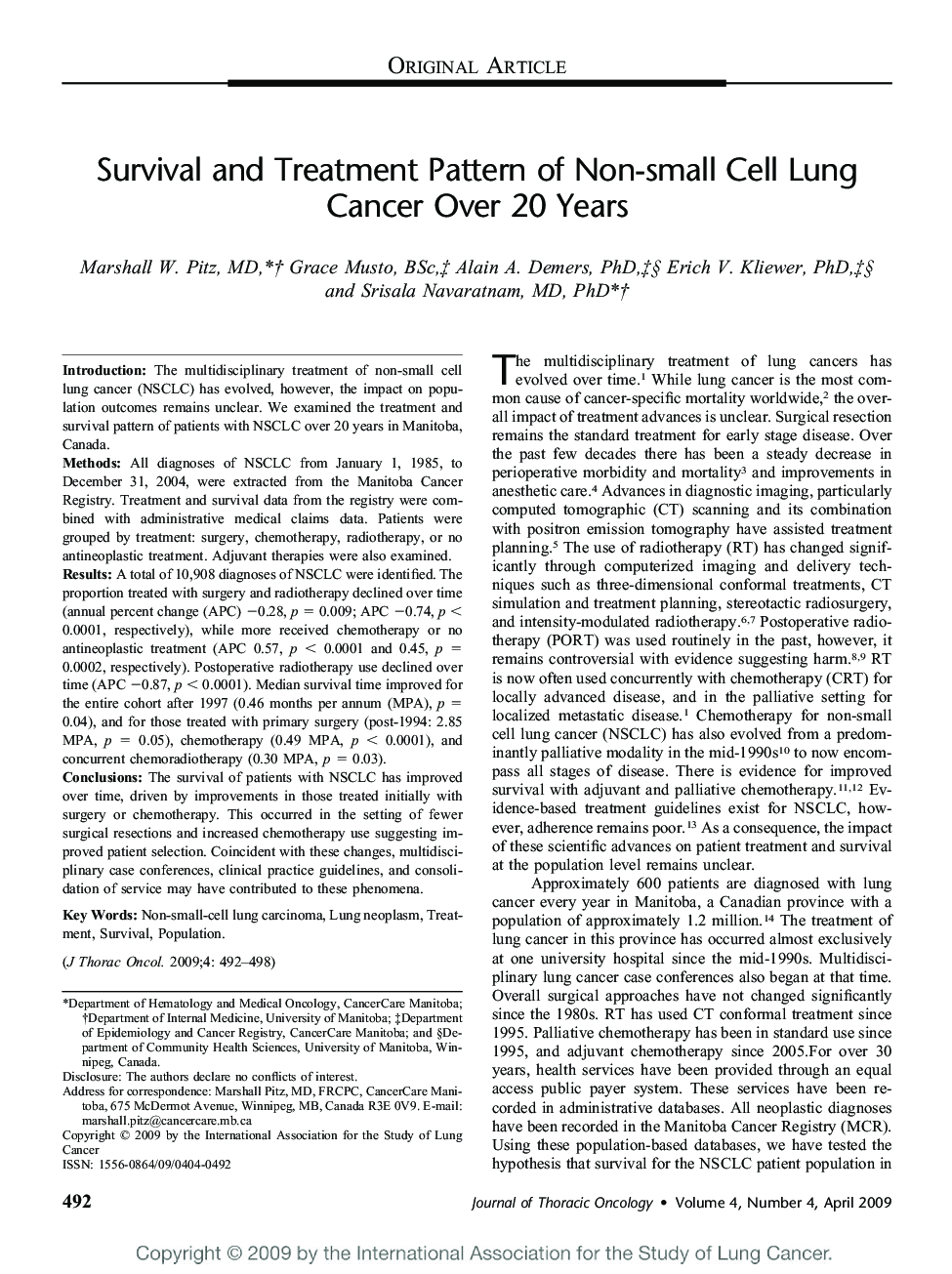| Article ID | Journal | Published Year | Pages | File Type |
|---|---|---|---|---|
| 3992277 | Journal of Thoracic Oncology | 2009 | 7 Pages |
IntroductionThe multidisciplinary treatment of non-small cell lung cancer (NSCLC) has evolved, however, the impact on population outcomes remains unclear. We examined the treatment and survival pattern of patients with NSCLC over 20 years in Manitoba, Canada.MethodsAll diagnoses of NSCLC from January 1, 1985, to December 31, 2004, were extracted from the Manitoba Cancer Registry. Treatment and survival data from the registry were combined with administrative medical claims data. Patients were grouped by treatment: surgery, chemotherapy, radiotherapy, or no antineoplastic treatment. Adjuvant therapies were also examined.ResultsA total of 10,908 diagnoses of NSCLC were identified. The proportion treated with surgery and radiotherapy declined over time (annual percent change (APC) −0.28, p = 0.009; APC −0.74, p < 0.0001, respectively), while more received chemotherapy or no antineoplastic treatment (APC 0.57, p < 0.0001 and 0.45, p = 0.0002, respectively). Postoperative radiotherapy use declined over time (APC −0.87, p < 0.0001). Median survival time improved for the entire cohort after 1997 (0.46 months per annum (MPA), p = 0.04), and for those treated with primary surgery (post-1994: 2.85 MPA, p = 0.05), chemotherapy (0.49 MPA, p < 0.0001), and concurrent chemoradiotherapy (0.30 MPA, p = 0.03).ConclusionsThe survival of patients with NSCLC has improved over time, driven by improvements in those treated initially with surgery or chemotherapy. This occurred in the setting of fewer surgical resections and increased chemotherapy use suggesting improved patient selection. Coincident with these changes, multidisciplinary case conferences, clinical practice guidelines, and consolidation of service may have contributed to these phenomena.
